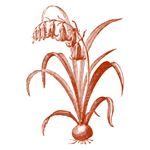by Laurie Hess
As I head out on my walk this morning, I see children everywhere, in the parks, in backyards, at the community pools. Two children were blowing the seeds from a dandelion across the blue early September sky. School begins late in our little town, after Labor Day.
It is, however, back to school time for all of my grandchildren. The end of summer leaves me feeling a bit wistful these days, since I am no longer going back to school. Oh, I was ready to retire. I was a teacher for many years, and the 60 or 70 hour work weeks finally caught up with me.
There were many days when I would get to school around 6:45 a.m., teach all day, help students and have open labs after school (I was a chemistry teacher) and leave at 6:00 or 6:30 p.m., then I would go home, make dinner, eat dinner, and grade papers on the couch until I fell asleep. The next day I would get up and do it all over again.
I loved teaching in spite of the schedule; I loved the students, who always kept me smiling at their antics. There were many times, when disciplining a student for an infraction of a very important rule, that I had to bite the inside of my cheek to keep from laughing while I was being stern.
I loved the creativity involved in assembling a good lesson plan. Finding or fabricating a new activity was a process in problem-solving, a puzzle. Putting everything together just right, so that you could see light bulbs going on over students’ heads after the lesson, was rewarding.
My classes consisted of first-year chemistry students, fifteen and sixteen-year-olds. The cardinal sin, which I tried to avoid at all costs, was to be boring.
Most of the time, it is easy to avoid boredom if you are a science teacher. There are so many items you can pull out of your bag of tricks – labs, projects, puzzles, role-playing – activities that keep students moving and make them think for themselves. One of the topics that I sometimes struggled to make relevant was quantum theory.

Now quantum theory is actually very interesting. Really. The trick was to convince high school sophomores of this. It is estimated that 30% of our US economy is related to quantum theory in some way. Everything involving microprocessors, lasers, memory chips, LEDs and LCDs would be impossible without quantum mechanics.
When you get into the quantum realm, the Newtonian laws that govern our visible universe seem to break down. Two particles can exist at the same place at the same time. Or those same two particles can seemingly lose their thing-ness altogether and become light, pure energy.
Gravity, which only affects matter (something that has mass), is found to bend a beam of light towards a large, heavy object like a planet or a star. Does this mean that light has mass? (Spoiler alert: yes!) Gravity is also found to affect time, so that time passes differently – more slowly – at the surface of the earth (where there is a lot of gravity) than in outer space (where there is little gravity). Maybe that is why time passes so slowly when we are bored – it feels like we are being pulled down by an increased amount of gravity.
Physicists, describing quantum theory, are known to talk like mystics. The English physicist Arthur Eddington was quoted as follows: “Whether in the intellectual pursuits of science or in the mystical pursuits of the spirit, the light beckons ahead, and the purpose surging in our nature responds.” and “The physical world is entirely abstract and without actuality apart from its linkage to consciousness.” This is a physicist’s writing! A Britishphysicist!
As the particles you are studying get smaller and smaller, as you move from atoms to electrons, protons, and neutrons, to quarks and gluons, the less these particles seem like anything at all, and the more they seem like energy, light, spirit.
Even you and I, who seem so solid, so real, so substantial, are made up of these atoms, these sub-atomic particles, and these sub-sub atomic particles. Could this be God’s light literally shining through us?
Consider this: there are approximately 37 trillion cells in the average human body, give or take a few hundred billion. Of these cells, about 60 billion die each day. That means that your body must make 60 billion new cells each day because we don’t lose cells as we age. You are literally a different person than you were yesterday. How many of your cells have died and been replaced while you have been reading this article?
So, who am I? Am I the 37 trillion cells I was yesterday or the 37 trillion cells I am today? It’s a trick question: I am not just a collection of cells. I have a soul, or as George McDonald said “You don’t have a soul. You are a soul. You have a body.”
It is very illusory. What appears to be solid and real – my body – is an ever-shifting, ever-changing entity made up of energy at its core, but what seems to be spirit – my soul – abides. My body has mass and is pulled toward the center of the earth by gravity, but so is light. The soul fills and nourishes the body. It sees what the body cannot see. My body seeks food, comfort, entertainment, the immediate. My soul has an affinity toward God, the eternal.
I walk down the road, watching the children enjoying the last warm days of summer, and I feel weightless as a dandelion puff, as if gravity has no effect on me. I am shot through with light, pure energy. My body is made from starlight and my soul is ethereal as an angel’s feather. I fix my gaze on the eternal fire burning in each cell of every dandelion seed and walk on, my spirit buoyed.
 Laurie Hess is a mother of three adult sons and grandmother of three grandsons who has been married to a kind and supportive husband for over 40 years. A former chemistry teacher, Laurie now spends much of her time training for and running marathons and trail races, which gives her ample opportunity to ponder the wonders of the universe. She blogs at Meditations in Motion. You can connect with her on Facebook or Twitter.
Laurie Hess is a mother of three adult sons and grandmother of three grandsons who has been married to a kind and supportive husband for over 40 years. A former chemistry teacher, Laurie now spends much of her time training for and running marathons and trail races, which gives her ample opportunity to ponder the wonders of the universe. She blogs at Meditations in Motion. You can connect with her on Facebook or Twitter.
This piece first ran here. Cover photo by Dawid Zawiła on Unsplash





This is lovely and mind bending! Thanks for sharing your wisdom.
Thank you so much for your very kind comment!
Laurie, I absolutely love this. My grown daughter is especially science minded, and we have these discussions about how science and faith shouldn’t be at odds. I read this to her this morning…thank you for your poetic teaching. And thank you for submitting!
Thank you, Amanda. I absolutely agree – science and faith should not be at odds.
I spent many years working at a high school. I was not a teacher (thank goodness), but I talked with teachers every day, and admire them so much. I heard once that a part-time teaching job is actually full time, and a full-time teaching job is actually double time. Thank you for all you did for those kids! …. And I love George McDonald’s comment.